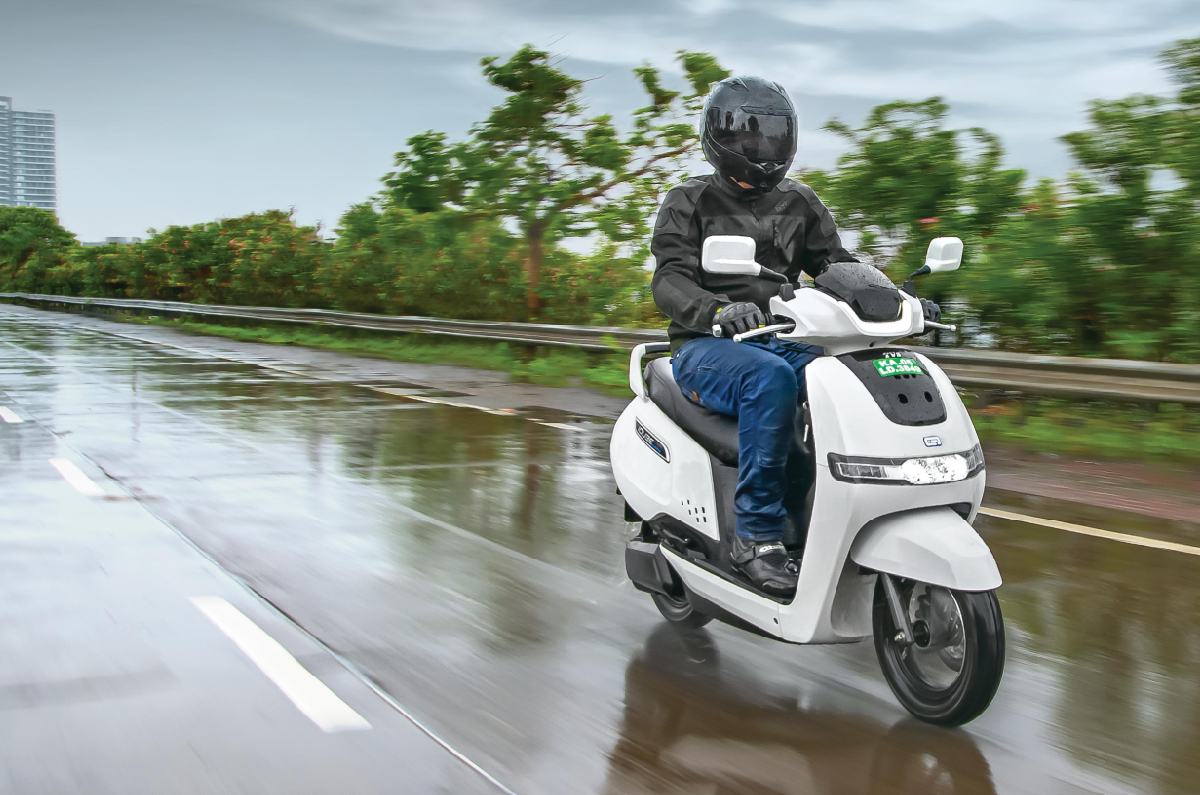Review: TVS iQube review, road test

We are probably still years away from having widespread charging stations across major cities, and besides, it’s not only cities but smaller towns and villages that contribute significantly to overall two-wheeler sales. What the EV space really needs in the current scenario is a high-quality electric two-wheeler that doesn’t cost significantly more than the average petrol powered scooter. Our first ride review of the TVS iQube from last year revealed that it was on the right track, but we got our hands on it yet again to get a clearer picture. This time we’re going to put it through a full road test to let you know what it’s all about.
With Power (mode) comes responsibility. The iQube can be surprisingly quick for someone not used to EVs, which is why it’s reassuring to know that it’s got the chassis to handle it. The telescopic fork and twin shock absorbers do a fine job at keeping this thing planted at all times. The scooter rides on 12-inch wheels with TVS tyres that also aid the grip levels. Despite being quite heavy, at 118kg, most of its weight is masked well because of its lower centre of gravity.
What this means is that the iQube is stable in the corners and doesn’t feel nervous or twitchy even though it runs narrower tyres than some 125cc petrol-powered scooters. While the iQube has got stability covered, the same can’t be said for agility. The steering feels heavy and by this we mean that the handlebar takes a little effort to turn when compared to most petrol-powered scooters and some electric scooters. It won’t be as flickable as some rivals in the city, but it’s not to the point of being problematic. The ride quality, on the other hand, is rather impressive. The plush suspension swallows almost every imperfection at low speeds, but hitting a pothole at higher speeds can bottom-out the soft telescopic fork.
What sets the iQube apart from every other two-wheeler that’s priced close to it is the TFT display. Superbikes from big Japanese brands still feature LCDs, whereas this Indian electric scooter gets a sharp colour screen. It comes with its own app that enables smartphone connectivity. With this, it displays turn-by-turn navigation, call and SMS alerts, trip information and more. It also shows information like the strength of your smartphone’s network and battery level. All that this display needs is a software update that’ll help it boot up quicker and fix the issue where it switches from night mode to day mode under streetlights. Other than those minor bugs, the display is perfect and a great addition to this scooter.
Like many other EVs, the TVS iQube gets a park assist function. This function has its own dedicated button that lets you switch between reverse and forward mode. The speed is limited to 3kph in reverse, while it goes up to 10kph in the forward direction. The scooter also has a USB charging port in the underseat storage area.
The iQube comes with a portable charging cable, but if you want a more permanent solution you’ll have to get the Smartxhome system that will cost you an additional Rs 10,000. While the optional charging system doesn’t provide faster charging, it does feature an RFID security feature, which means no one else can use your charger. TVS has said that fast charging affects the life of the lithium-ion batteries in the scooter, which is why it currently doesn’t support it.
With the latest FAME 2 subsidy increase, the iQube now costs much closer to 125cc scooters. In Delhi, where there is an additional subsidy available, it costs Rs 1 lakh, on-road. That makes this the first high-quality two-wheeler EV in India that is a legitimate rival to established petrol-powered scooters.
What TVS really has to work on now is availability and the customers should come running. It’s currently available only in Bengaluru, Chennai, Coimbatore and Delhi, although TVS says that it will expand to 20 cities by March 2022.
A family friendly design, an incredibly low running cost, a reasonably realistic range for daily city commutes, and the competitive price tag are things that can’t be ignored. If you also factor in the performance, ride quality and the TFT display, the TVS iQube is a no-brainer.
OWNERSHIP COSTS
To give you an idea, the TVS iQube has an approximate running cost of around Rs 0.3 per km, while a petrol-scooter costs closer to Rs 1.8 per km. The difference is so huge that you would end up saving roughly Rs 15,000 once you covered 10,000km and Rs 75,000 after 50,000km on the iQube. This amount is calculated based on the electricity and fuel consumption costs; EVs are also much more affordable in terms of service costs because there are no oils and filters that need changing. The battery is warranted for 3 years/50,000km, which should be reassuring for most typical scooter users.

No comments
please do not enter any spam link in the comment box